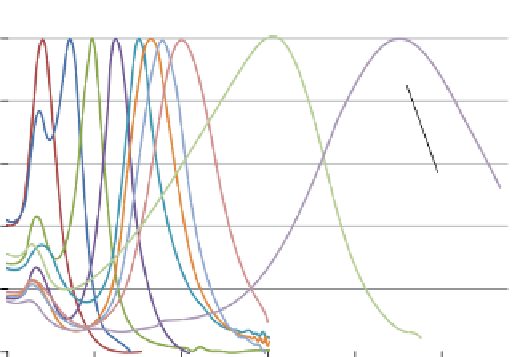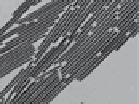Biomedical Engineering Reference
In-Depth Information
1
550
600
650
700
750
780
808
850
1064
1400
0.8
0.6
0.4
0.2
0
450
650
850 1050
Wavelength (nm)
1250
1450
FiGure 12.3
Nanopartz gold nanorods can be tuned across the visible spectrum into the
near IR with very narrow absorptions.
with surface plasmon resonances (absorptions) tuned from 550 to 1400 nm, allowing
selection of the nanorod (NR) to match that of excitation laser (Fig. 12.3).
Nanopartz materials have been cited in over 200 publications (www.google.
com/scholar, search “Nanopartz”), 16 patents, and 2 journal covers. Nanopartz
has also developed proprietary and trade secret methods to replace the toxic
cetyltrimethylammonium bromide (CTAB) capping agent used in the production
of many nanoparticle formulations with a noncytotoxic polymer that also results
in long circulation times. The examples of commercial Nanopartz AuNRs are
shown in Figure 12.4.
12.2.3
nanorod scale-up synthesis
during the past decade, a significant success has been achieved in the synthesis of
well-defined nanocrystals [25-27], but their organization into functional macro-
scopic materials and devices [28-30] remains a challenge [30-32]. The majority of
existing synthetic procedures are designed for a milligram scale, and very often
they cannot be extrapolated to a large-scale synthesis [33-35]. A particularly
important example is related to anisotropic nanostructures of gold, such as single
crystalline NRs [35], penta-twinned NRs [36], and nanowires [37]. These materials
have been shown to have a remarkable potential in areas ranging from nanomedi-
cine to metamaterials and data storage [38]. Since the late 1990s, there has been
an exponential growth in the number of papers reporting on various syntheses of
AuNRs using electrochemical [39], photochemical [40], template-assisted [41],
and wet chemistry methods [42]. The best results are generally achieved by

















Search WWH ::

Custom Search